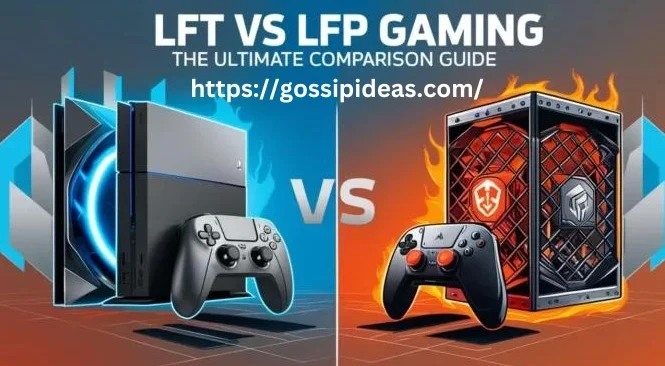The world of competitive gaming is constantly evolving, and with it comes a myriad of strategies teams can adopt to secure victory. Among these strategies, LFT vs LFP gaming have emerged as two prominent approaches that gamers rely on when building their squads. But which one truly holds the upper hand? As the lines between collaboration and recruitment blur, understanding these methods (LFT vs LFP gaming) becomes crucial for any serious gamer looking to climb the ranks.
Introduction
In this blog post, we’ll dive deep into LFT vs LFP gaming—exploring what each strategy entails, their unique advantages, and how effective communication plays a pivotal role in both. With real-world examples from successful teams showcasing either approach, you’ll gain insights on choosing the right strategy tailored to your team’s needs. Whether you’re an aspiring pro or just enjoy casual play with friends—a clear understanding of these tactics could be your game-changer!
Understanding LFT vs LFP Gaming
LFT, or “Looking for Team,” is a strategy where players seek out established groups to join. This approach often attracts individuals aiming to enhance their skills within a structured environment. Players typically showcase their abilities, hoping to impress potential teammates and secure a spot in competitive lineups.
On the other hand, LFP stands for “Looking for Player.” Here, teams actively search for fresh talent to fill specific roles or bolster their roster. This method emphasizes teamwork and synergy since existing members want to find players who complement their style of play.
Both strategies have distinct dynamics that impact gameplay and team cohesion. While LFT focuses on individual talent seeking collaboration, LFP centers around group dynamics as they strive to create well-rounded squads. Understanding these differences can help gamers navigate the landscape more effectively.
Advantages of LFT Gaming
as we discuss LFT vs LFP gaming, LFT gaming, or “Looking for Team,” opens the door to a world of opportunities. Players can connect with like-minded teammates who share similar goals and play styles. This synergy often leads to improved performance on the battlefield.
Another key advantage is flexibility in team dynamics. LFT allows players to adapt quickly based on their skill levels and preferences. They can seek out teams that complement their strengths, enhancing overall gameplay.
Building a diverse team is also easier with LFT strategies. Players from different backgrounds bring unique skills and perspectives, fostering creativity in strategies and tactics.
Moreover, LFT promotes active engagement within the gaming community. It encourages networking, as players meet new friends while expanding their horizons in various games or genres they may not have explored alone.
Advantages of LFP Gaming
According to LFT vs LFP gaming approaches, LFP gaming offers a structured approach to team dynamics. Players are often recruited for specific roles, leading to clear expectations and responsibilities. This clarity can enhance individual performance and team synergy.
Additionally, LFP strategies encourage long-term commitment among players. Teams build chemistry over time, which is crucial in high-stakes matches where communication under pressure makes all the difference.
Moreover, with established rosters of LFT vs LFP gaming, teams can develop unique tactics tailored to their strengths. This strategic depth allows for more innovative gameplay that opponents may struggle to counter.
LFP gaming fosters a sense of community and loyalty within the squad. Players grow together through victories and defeats, creating bonds that transcend the game itself. Such connections can be pivotal when facing intense competition or adversity in tournaments.
The Role of Team Communication in Both Strategies
According to LFT vs LFP gaming method, Effective communication is crucial in both LFT and LFP gaming strategies. In an LFT setup, players often come together from different backgrounds. They may not have prior experience working as a unit. This can lead to misunderstandings if communication isn’t prioritized.
On the other hand, LFP teams typically consist of established members who know each other’s strengths and weaknesses. Their familiarity allows for more nuanced conversations during gameplay, enabling quicker decision-making.
Regardless of the strategy chosen, clear communication fosters trust among team members. It encourages openness about strategies and tactics that could be employed during matches.
The ability to adapt communication styles in LFT vs LFP gaming, according to the team’s needs enhances synergy on the battlefield. Whether through voice chat or text messages, effective dialogue ensures everyone is aligned with the game plan at all times.
Case Studies: Successful Teams Using LFT and LFP Gaming
One notable example of LFT gaming success is Team Liquid in the competitive Valorant scene. By constantly adapting their roster, they maintained a high level of synergy and skill across various tournaments. Their flexibility allowed them to harness fresh talent while optimizing team dynamics.
On the other hand, Fnatic exemplifies LFP gaming by sticking with a core group for an extended period. This stability has fostered deep understanding among players, allowing them to develop intricate strategies that exploit opponents’ weaknesses effectively.
LFT vs LFP gaming contrasting styles show how both approaches can lead to triumph within the esports arena. Each team’s philosophy shapes its gameplay and influences its overall performance on different stages.
Analyzing these case studies reveals invaluable insights into how varying strategies can succeed under pressure while showcasing distinct paths toward excellence in competitive gaming environments.
Choosing the Right Strategy for Your Team
Choosing the right strategy hinges on your team’s dynamics and goals. LFT gaming shines when you prioritize fast-paced recruitment, allowing for more fluid team composition.
On the flip side, LFP gaming emphasizes stability. It fosters long-term relationships among players, building trust over time. If consistency is key for your group, this may be the way to go.
Consider your gameplay style too. Are you seeking quick adaptations? LFT might serve you well here. However, if strategic synergy matters more in high-stakes matches, lean towards LFP.
Evaluate your current roster as well. A mix of veterans and newcomers can benefit from an LFT approach but could thrive with established roles in an LFP setup.
LFT vs LFP gaming, each strategy has its merits depending on how adaptable or cohesive your team needs to be at any given moment. Prioritize what aligns best with both player skills and collective objectives.
LFT VS Recruiting Gaming
LFT (Looking for Team) and recruiting gaming each have their unique approaches to team building. In LFT, players actively search for teams that align with their skills and aspirations. This method emphasizes personal initiative, allowing gamers to showcase their talent in competitive environments.
Recruiting gaming, on the other hand, focuses on teams seeking out specific players who fit a predefined profile. Here, organizations often prioritize skill sets tailored to particular roles within the game. This strategy can streamline recruitment but may limit diversity in play styles.
Both methods cater to different player needs and preferences. Some thrive in dynamic environments where they can explore various opportunities through LFT channels. Others might prefer the stability of being invited into an established group via recruiting processes.
Understanding these contrasting methodologies helps players make informed decisions about how best to advance their gaming careers and find fulfilling team dynamics.
Conclusion: Finding a Balance Between LFT and LFP Gaming for Optimal Results
LFT vs LFP gaming can be the key to a team’s success. Each strategy offers unique advantages that can enhance gameplay, foster team dynamics, and ultimately drive better results.
LFT allows for flexibility in player roles, ensuring teams are well-rounded and adaptable. On the other hand, LFP promotes stability through established rosters that build chemistry over time. The choice between them often depends on a team’s specific needs and goals.
Successful esports teams have showcased both strategies effectively for LFT vs LFP gaming. By understanding when to implement each approach, teams can maximize their potential.
Finding harmony between these two methods (LFT vs LFP gaming) may lead to optimal performance. Embracing elements from both strategies could be the secret sauce for creating a resilient and skilled team ready to tackle any challenge ahead.










